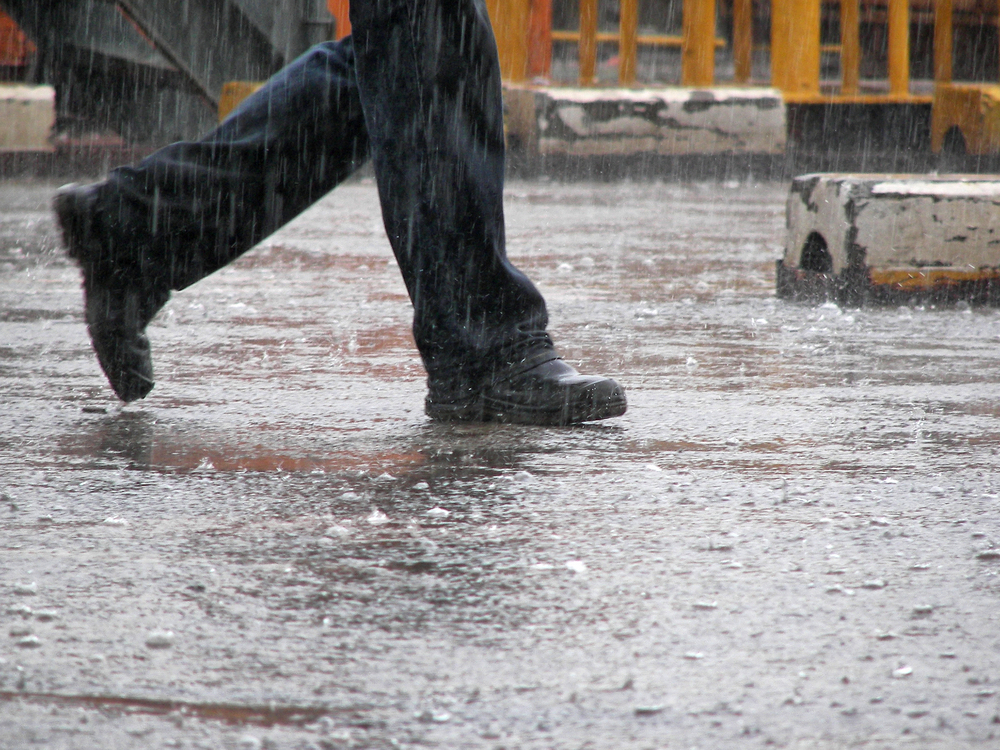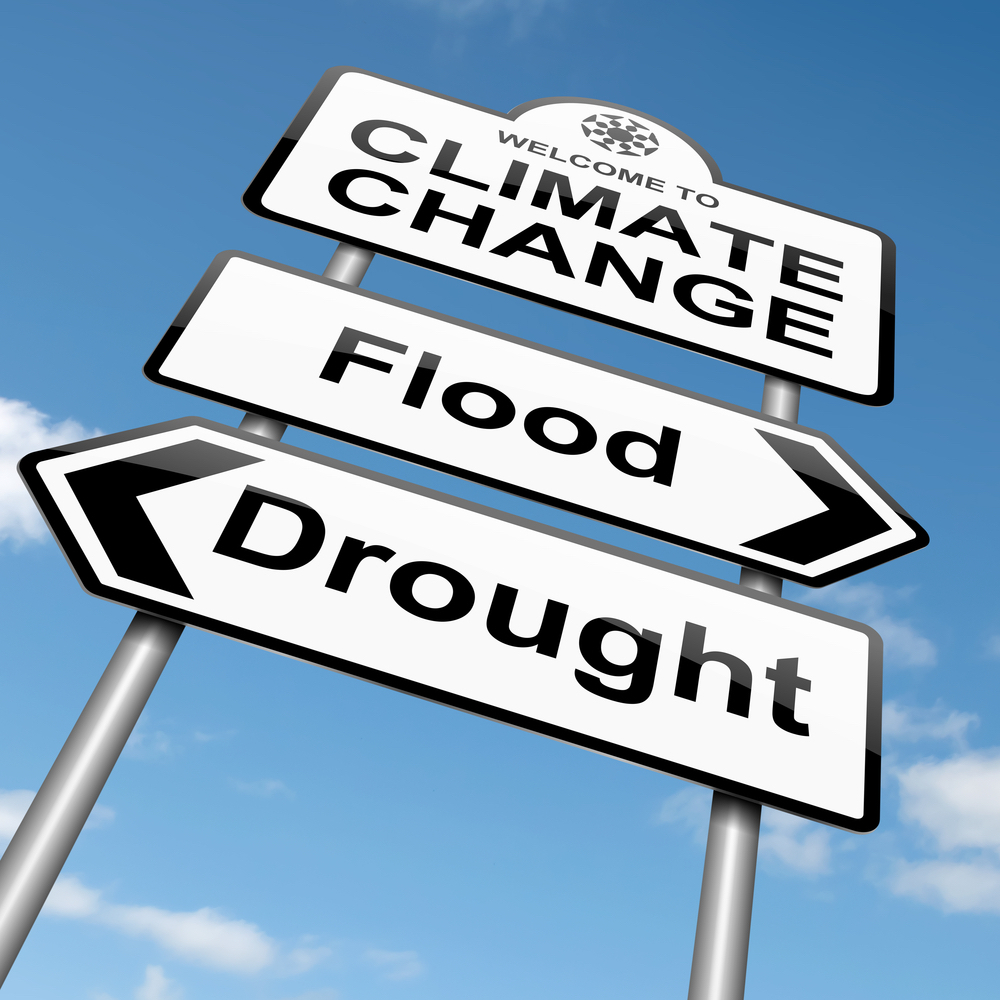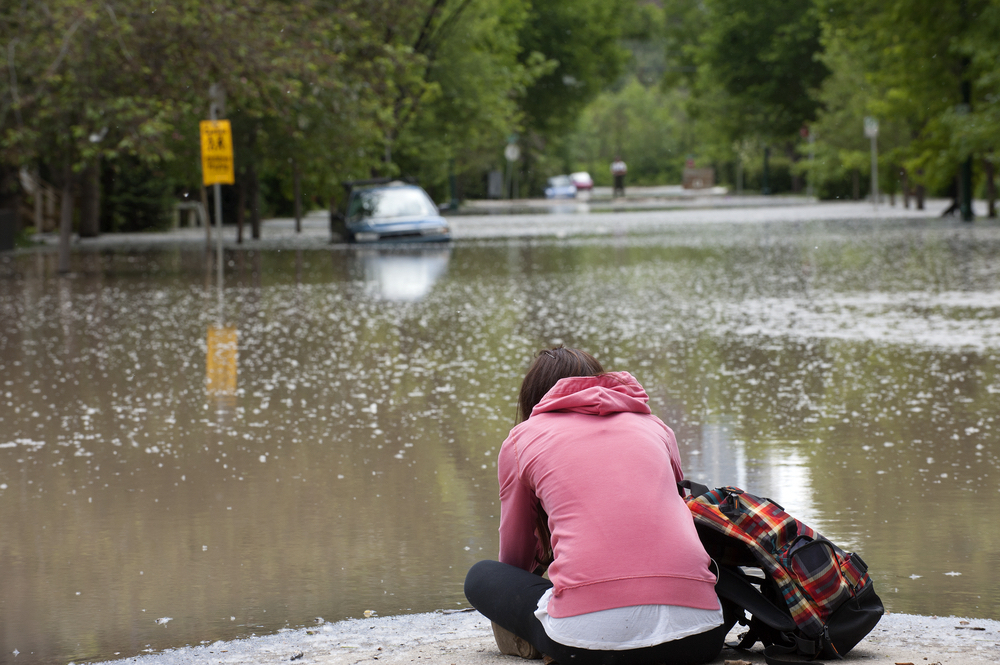
High Voltage / Shutterstock.com
Louisiana has been in the news a lot recently, and unfortunately, not for anything positive. Parts of the state were hit with over two feet of rain in a four-day period, and at least 13 people have died as a result. A tweet sent out by the National Weather Service in Hanford, California (@NWSHanford) said, “Parts of Louisiana have received more rain in the past few days than Bakersfield has received in the past 5.5 years.” Bakersfield is a city about two hours north of Los Angeles. As you can imagine, especially if you’ve seen any of the news coverage, this is an incredible amount of rain. Incredible rain leads to incredible floods.
But why is it happening? Partially, this is due to global warming. As the air gets warmer on average, it can hold more moisture. Then, when it reaches its bursting point, there’s more rain to be let loose.
Think about it this way: If you take a cold shower, your mirror doesn’t fog up and the air doesn’t feel heavy when you get out. When you take a hot shower, your mirror gets foggy, the air feels heavy and humid, and it can almost feel like you’re trying to breathe in water. That is what global warming is doing to the atmosphere.

Sam72 / Shutterstock.com
So, then think about the time of year. It’s August, which is historically one of the two hottest months of the year for the state of Louisiana. Hence, warm air that can hold a large amount of water. High temperatures also cause evaporation. Louisiana happens to be located right on the Gulf of Mexico, a perfect water source for large amounts of evaporation. When you put it all together—the warm temperatures, the increased evaporation, and the ability for the atmosphere to hold more moisture—the end result is torrential downpours.
Scientists predict that places that are already wet, like Louisiana, will continue to get wetter, while dry areas, like Bakersfield, will get drier. Storms will likely become more intense due to the combination of warmer air and warmer water. The warm air indicates, like mentioned above, that the atmosphere can hold more water. The warm water is what drives a tropical storm or hurricane. The warmer the water, the bigger the storm. So, unfortunately, Louisiana isn’t out of the woods.
That leaves us with two questions: What should you do if you get caught in a horrible flood, and what can we do to combat climate change?
First, what to do in a flood.
Floods can be incredibly dangerous. Not only can they come out of nowhere (flash flooding), but they can also carry debris, sweep you off your feet, and strand vehicles. It only takes six inches of water to knock down an adult. It’s much better to get to higher ground than it is to attempt to cross a flooded area. Unfortunately, though, that’s about as much as you can do. When there’s as much water as there was in Louisiana, if you can’t leave your home, you should get to the roof. If you’re caught outside, find higher ground. If water surrounds your vehicle, abandon the car (if that water is moving, however, Ready.gov advises you to stay in the car).
Second, how to combat climate change.

Ryan Morgan / Shutterstock.com
This is not an easy problem to solve, but fossil fuel usage is one of the top contributors to climate change. This means that every time you fill your car with gas, fly on an airplane, or use anything made out of plastic (which is synthesized from petroleum), you are contributing to climate change. It may sound futile, but with a few lifestyle changes, you can make a difference. Everyone in the world needs to work together if Earth is going to stay healthy and habitable in the future.
- Turn the lights out. Switch to swirly lightbulbs (compact fluorescent lightbulbs). Raise your thermostat during the summer. Don’t hang around an open fridge before you’ve decided what to eat. Anything you can do at home to reduce the amount of electricity you use is worth a shot. It’ll also make your bill more manageable, so that’s a win for both you and the environment.
- Use public transportation. The more people who use public transportation, the fewer cars there are on the road. Yes, a bus inherently uses more gasoline than a car. But, a bus also holds significantly more people than a car, meaning that the overall usage of fossil fuel is minimized. If you’re really lucky, you live somewhere like Bristol, U.K., where there’s a bus that runs entirely on sewage. It’s affectionately known as the “poo bus.”
- Buy a fuel efficient car. Obviously, this depends a lot on what you can afford and what types of cars are available, but it makes a lot more sense to buy a Camry than a Hummer. A hybrid vehicle or one that can run on biofuel are even better options.
- Recycle. If you recycle your plastic products, fewer new ones need to be made and less fossil fuel needs to be dedicated to producing plastic. Plastic isn’t the only thing you can recycle, though. Glass, paper, cardboard, and any other number of things can be dropped off at a recycling facility near you (but check first to make sure it accepts what you’ll be bringing).
- Use your voice. The more people who advocate for change, the more likely it is that change will happen. Spread the message about climate change, show others how it is already affecting people’s lives, and do what you can to reduce your footprint.
Read this blog about Earth Day to learn about more ways you can affect positive change when it comes to the environment. And be prepared. You never know when the next storm is going to hit.
-
How to Spot the Signs of a Toxic Relationship
-
How to Recognize Cyberbullying
-
What to Do After You’re Mugged
-
The Reality of Owning a Fake ID
-
What You Need to Have If You’re Walking Alone at Night
-
How to Stay Safe during Your New Year’s Eve Celebration
-
How to Prepare for a Safe Road-Trip
-
Preparing to Leave for College with a Chronic Illness
-
How to Help a Friend with a Drug or Alcohol Dependency
-
What to Do If Your Debit or Credit Card Is Compromised
-
Nine Apps that Will Keep You Safe on and off Campus
-
How to Drink Safely at Your First College Party

